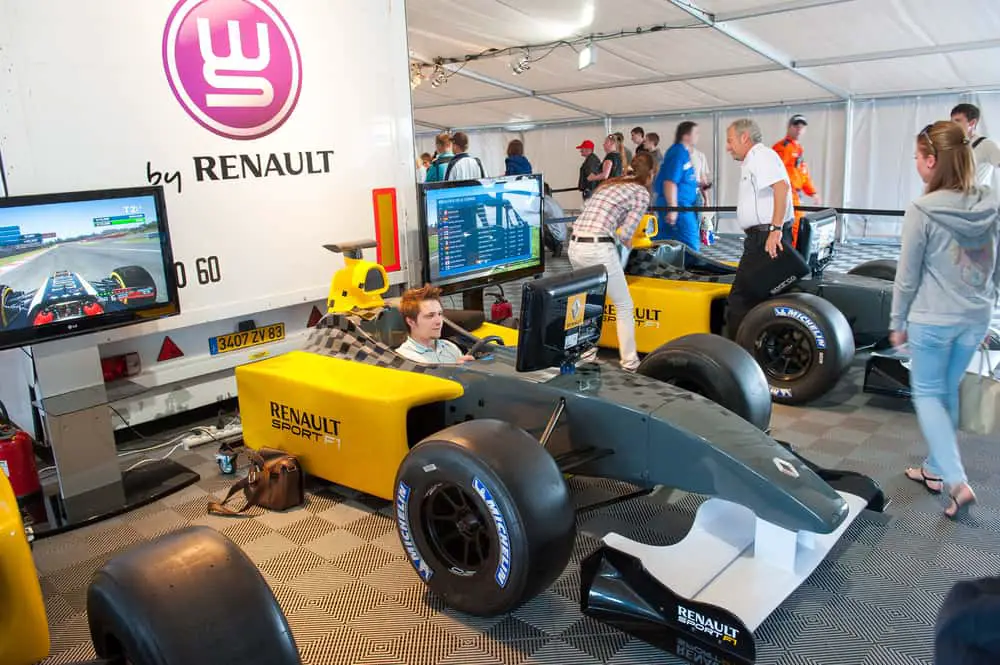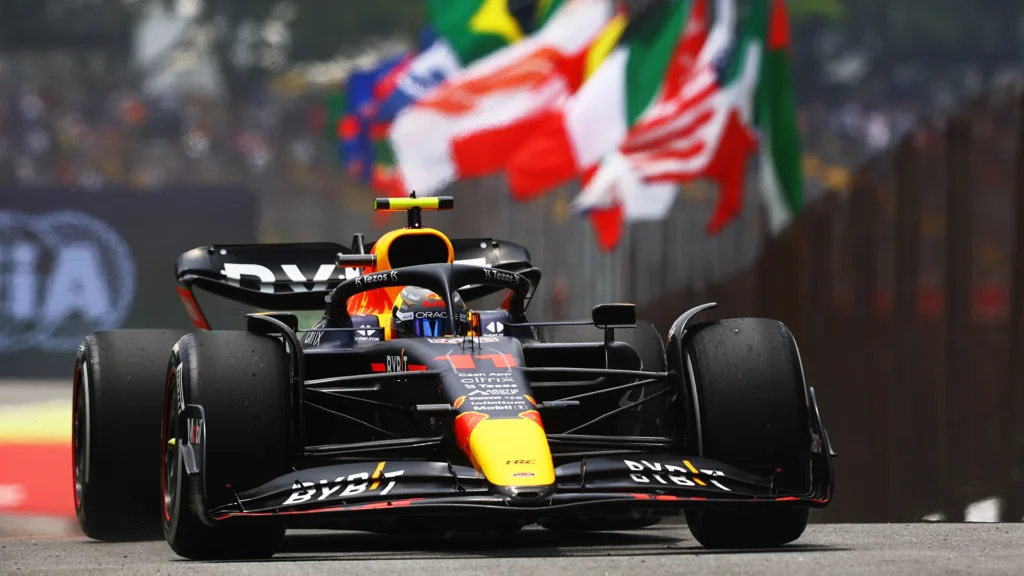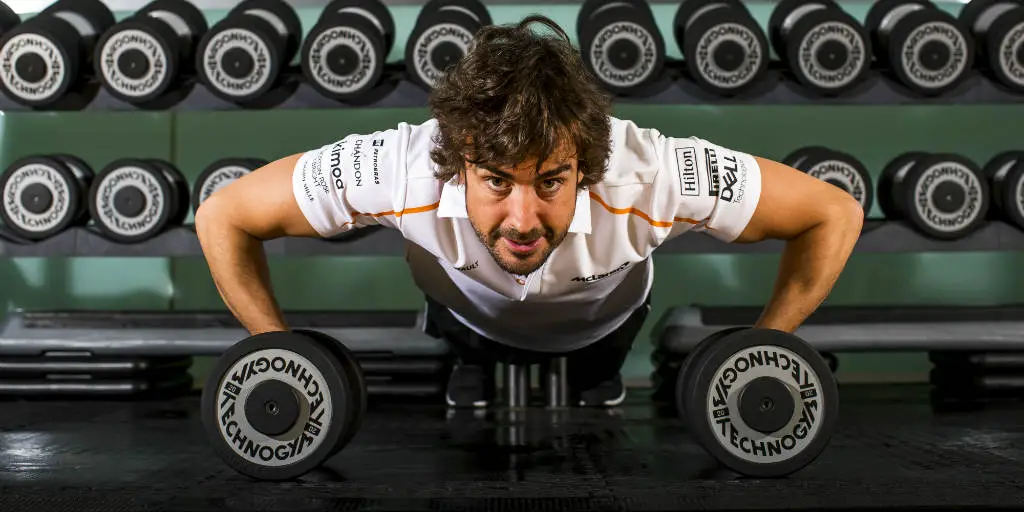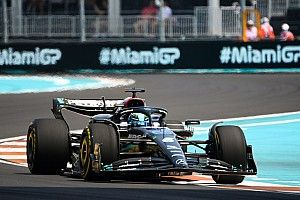Formula 1 is one of the most physically and mentally demanding sports on the planet. F1 drivers have to endure high speeds, extreme G-forces, changing weather conditions, and fierce competition.
To perform at their best, they need to practice regularly and train hard. But how often do they practice and what kind of training do they do? Here is a brief overview of the practice and training routines of F1 drivers.
Formula 1 Drivers Practice – Simulators

One of the main ways that F1 drivers practice is by using simulators. Simulators are devices that mimic the race conditions that drivers will experience at any given track. They have a cockpit-like structure, a steering wheel, pedals, screens, and various sensors and instruments that provide realistic feedback. Racing simulators allow drivers to learn the layout of a circuit, find the optimal racing line, practice different scenarios, and test different car settings.
Simulators are especially useful because F1 has banned private testing on the track since 2009, limiting the amount of time that drivers can spend on the real circuit. They also help drivers save time and money, as they can practice from anywhere without traveling or paying for track fees.
There are two types of simulators that drivers use: factory simulators and home simulators. Factory simulators are owned and run by the teams themselves, and they have more advanced technology and features than home simulators. They can change various parameters such as weather, tire wear, visibility, and fuel load. They also have more accurate data and models of the car and the track. Drivers usually use factory simulators before each race weekend to prepare for the specific circuit.
Home simulators are personal setups that some drivers own and use for additional practice when they are not at the factory. They usually consist of a few screens, a steering wheel, pedals, and a computer. They are not as sophisticated or realistic as factory simulators, but they still help drivers improve their skills and reflexes. Some drivers also use home simulators for fun or as a hobby.
Formula 1 Drivers Practice – Pre-Season Testing

The only opportunity that teams have to test their cars on the track for the first time is during pre-season testing days.
These are official sessions organized by F1 before the start of each season, where all teams and drivers can participate. Pre-season testing usually lasts for six days, split into two three-day sessions at different tracks.
Pre-season testing is crucial for teams and drivers to evaluate their new cars, test different components and configurations, collect data, identify problems, and make adjustments.
It is also important for drivers to get familiar with their new cars, feel how they handle on the track, and build confidence.
Pre-season testing is not a competition, but it still provides some indication of how fast and reliable each team and driver are. However, it is not always a reliable predictor of performance during the season, as teams may hide their true potential or encounter unexpected issues.
Formula 1 Drivers Practice – Free Practice
F1 drivers have at least two free practice sessions during every race weekend. Free practice sessions give drivers and their teams a chance to go around the track without worrying about lap times or positions.
They can use these sessions to fine-tune their car setup, test different strategies, collect data, analyze performance, and make improvements.
Free practice sessions usually last for one hour each. The first free practice session (FP1) takes place on Friday morning (or Thursday morning for Monaco), followed by the second free practice session (FP2) on Friday afternoon (or Thursday afternoon for Monaco).
There is also a third free practice session (FP3) on Saturday morning before qualifying.
Free practice sessions are not mandatory for drivers to participate in, but they are highly recommended. They help drivers get used to the track conditions, which may change throughout the weekend due to weather or rubber buildup. They also help drivers find their rhythm and pace before qualifying and racing.
Formula 1 Drivers Practice – Qualifying

Qualifying is not technically a practice session, but it is still an important part of the race weekend that requires preparation and skill from the drivers. Qualifying determines the starting grid for the race based on the fastest lap times achieved by each driver.
It usually takes place on Saturday afternoon after FP3. It consists of three segments: Q1, Q2, and Q3. Each segment lasts for 18 minutes (Q1), 15 minutes (Q2), or 12 minutes (Q3).
After each segment, a certain number of drivers are eliminated based on their lap times: 5 in Q1 (leaving Q2), 4 in Q2 (leaving Q3), and 10 in Q3.
The drivers who are eliminated after each segment start the race from their respective positions based on their best lap times. The drivers who make it to Q3 compete for the pole position, or the first spot on the starting grid.
Qualifying is a crucial part of the race weekend, as it determines the order of the grid and gives an advantage to the drivers who start at the front.
The Qualy also requires strategy and skill from the drivers and their teams, as they have to decide when to go out on the track, what tire compound to use, how much fuel to carry, and how to avoid traffic and other obstacles.
Formula 1 Drivers Practice – Sprint Qualifying
In 2022, F1 introduced a new format for some of the race weekends called sprint qualifying. Sprint qualifying is a short race that takes place on Saturday after a single qualifying session on Friday. The result of sprint qualifying determines the starting grid for the main race on Sunday.
Sprint Qualifying Works As Follows
- On Friday, there is a single qualifying session that follows the same format as Q3 (12 minutes). All 20 drivers participate and try to set the fastest lap time. The result of this session determines the starting grid for sprint qualifying on Saturday.
- On Saturday, there is a sprint qualifying race that lasts for about 30 minutes or 100 km (whichever comes first). All 20 drivers participate and race for positions. The result of this race determines the starting grid for the main race on Sunday.
- On Sunday, there is the main race that follows the usual format (305 km or two hours). The drivers start from their positions based on sprint qualifying.
Sprint qualifying has some different rules than regular qualifying and racing. For example:
- Drivers have a free choice of tire compound for both qualifying and sprint qualifying. They also have a free choice of tire compound for the main race, regardless of what they used in sprint qualifying.
- Drivers do not have to make a pit stop during sprint qualifying, unless they have a puncture or damage.
- Drivers are awarded points for finishing in the top three positions in sprint qualifying: three points for first place, two points for second place, and one point for third place.
- Drivers do not have to use parc fermé conditions (restrictions on car modifications) between qualifying and sprint qualifying. They can make changes to their car setup, such as wing angle, brake balance, suspension settings, etc. However, they have to use parc fermé conditions between sprint qualifying and the main race.
Formula 1 Drivers Training

Besides practicing on simulators and on the track, F1 drivers also train hard to keep themselves fit and healthy. F1 driving is a physically demanding activity that requires strength, endurance, agility, coordination, and reaction time. F1 drivers also face high levels of stress, pressure, and mental fatigue during a race weekend.
To cope with these challenges, F1 drivers follow rigorous training programs that involve various exercises and activities.
The Training Program
Some of the common aspects of F1 driver training are:
- Neck training: One of the most important areas for F1 drivers to train is their neck. The neck muscles have to withstand high G-forces that can reach up to 6G in some corners and braking zones. F1 drivers use resistance bands, weights, harnesses, and helmets to strengthen their neck muscles and improve their endurance.
- Core training: Another key area for F1 drivers to train is their core. The core muscles help stabilize the body and support the spine during driving. F1 drivers use planks, bridges, crunches, twists, and other exercises to build their core strength and stability.
- Cardio training: F1 drivers also need good cardiovascular fitness to maintain their heart rate and blood pressure during a race. A typical F1 race can last up to two hours with no breaks or pauses. F1 drivers use cycling, running, swimming, rowing, and other aerobic exercises to improve their cardio fitness and endurance.
- Reaction training: F1 drivers also need fast reaction times to respond to changing situations on the track. They have to make split-second decisions that can affect their performance or safety. F1 drivers use tennis balls, speed balls, wall balls, and other exercises to train their reaction times and peripheral vision. They also use video games and simulators to sharpen their reflexes and decision-making skills.
- Agility training: F1 drivers also need good agility and coordination to control their cars and avoid collisions. They use agility ladders, hurdles, cones, and other exercises to improve their footwork, balance, and flexibility. They also practice martial arts, yoga, pilates, and other activities to enhance their body awareness and mobility.
- Cardio training: F1 drivers also need good cardiovascular fitness to maintain their heart rate and blood pressure during a race. A typical F1 race can last up to two hours with no breaks or pauses. F1 drivers use cycling, running, swimming, rowing, and other aerobic exercises to improve their cardio fitness and endurance. They also monitor their heart rate zones and VO2 max (maximum oxygen uptake) to optimize their performance.
- Strength training: F1 drivers also need good muscular strength and endurance to withstand the physical demands of driving. They use weights, resistance bands, kettlebells, and other exercises to build their upper body, lower body, and core strength. They also focus on functional movements that mimic the actions of driving, such as steering, braking, shifting gears, etc.
- Nutrition: F1 drivers also need good nutrition to fuel their bodies and minds during a race weekend. They follow a balanced diet that consists of carbohydrates, proteins, fats, vitamins, minerals, and fluids. They also avoid alcohol, caffeine, sugar, and processed foods that can affect their performance or recovery. They also hydrate well before, during, and after a race to prevent dehydration and heat exhaustion.
- Recovery: F1 drivers also need good recovery strategies to heal their muscles and tissues after a race weekend. They use massage, ice baths, compression garments, foam rollers, stretching, and other methods to reduce inflammation, soreness, and fatigue. They also sleep well and rest well between races to restore their energy levels and mental focus.
Conclusion
F1 drivers are among the most skilled and fit athletes in the world. They practice regularly and train hard to prepare for each race weekend.
F2 drivers use simulators, pre-season testing, free practice sessions, qualifying sessions, and sprint qualifying races to hone their skills and strategies on the track. They also use various exercises and activities to improve their physical and mental fitness off the track.
By doing so, they aim to achieve the ultimate goal of every F1 driver: winning the race.

